Renaissance Sciences
Natural Sciences
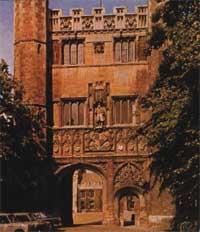
Since the time of the Pliny the research of plants and animals was suspended. XVI. In the 20th century, however, six researchers assumed this responsibility. His works XVI. It lasted from the beginning of the 18th century to the beginning of the 17th century. However, the main objective was none other than the accumulation of ancient knowledge in this field. We must wait for another time to find new research on this subject.
Medicine and Chemistry
During the Renaissance a school of humanistic doctors was created. Those of this school proposed: From medieval medicine (which was but a collection of conclusions often drawn through Arab writings, especially from some opinions of Greek doctors), attention is taken away and the sources, that is, the works of Hippocrates nahi Galeno, are used. Of course, this trend greatly expanded the tasks of knowledge, but once established this knowledge, the doctors again limited themselves to the authorities.
When this situation was overcome and the person observed again, to think and to investigate on his own, the medicine joined the chemistry that was being born of alchemy. In this way a new school of doctors studying chemistry, the yatrochemistry, was launched.
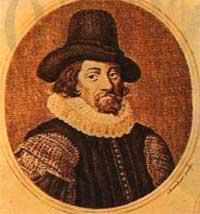
Alchemy and Arab chemistry came to Europe in the Middle Ages and affected some like Francis Bacon. The Arabs took the Pythagorean theory and adapted it. They recognized that the primary elements of things are not found in substances or in the principles or qualities of things. In this sense, the principles were considered three: that of sulfur or fire, that of mercury or fluence and that of salt or solidity. This theory spread throughout Europe with other Arab discoveries. In the 20th century.
In seeing this theory, we must remember that, like the four Greek elements, it was born to express the mysterious action of fire. The word sulfur did not indicate the element of the same name (with its weights and other particularities), but the burning capacity of any body. Mercury represented everything that is poured in liquid form and salt replaced solid diners. To these elements you can see the XV. In the second half of the 20th century alchemists incorporated the principle of life. Others, on the contrary, the celestial virtue, in which the conductor of the Universe through him dominated the phenomena of the world. These ideas went to medicine through chemistry.
In that environment a special man appeared, the Theophrastus of Hohenheim (1490-1541). This Swiss doctor interrupted the classical and orthodox school of Galen. He investigated the stones, minerals, mechanical devices and accidents and diseases that occur in mines in the Tyrol area. He later toured much of Europe studying diseases and remedies from different countries. He then obtained the medical chair of Basel, where he was assigned a new name against his will: Paracelsus, which seems to come from the name of the famous Roman physician Celsus. In the basilica she was attacked by several local doctors and a year later she had to abandon her.
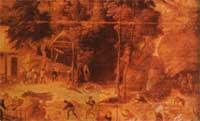
After dispensing with Paracelsus Galeno and Avicena in medicine, he began to use the consequences of his observations and research on medical problems. In his opinion, the true master of the doctor is not what you can think of the mind, but what the eyes can see and touch the hands.
Paracelsus discovered chemistry in medicine. For example, he realized that the air was very complex and it was called chaos. Under the generic name sulfur is a substance extracted from the vitriolar stratum, which is the ether. In his words, it has a sweet taste, the milestones are also eaten, so they fall asleep for a long period of time and then agitate without suffering any evil. So he realized the anesthetic property of the ether but not its values. The ether obtained above alcohol by the action of vitriol oil, sulfuric acid, was first obtained by Valerius Cordus (1515-1544). Doctor and botanist in medicine, gives us a detailed idea of his procedure, which went from alchemy to chemistry.
Paracelsus' followers, unlike those of Galenon, used chemical drugs in medicine. They discovered new beneficial drugs and discovered chemicals. Among them are Biringuccio, who dealt with mineralogical research, Agricola and Van Helmont. The latter, aware of the existence of different substances in the form of air, invented the name of gas (derived from the Paracelsus caose).
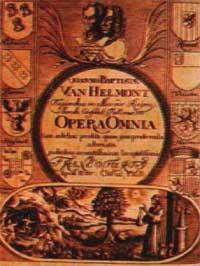
The first physical discovery of medicine was Sanctorius (1561-1636). He adapted the Galileo thermometer to measure the temperature of the human body and create a special tool to compare the rhythms of the pulsations. On the other hand, he studied the weight changes suffered by the human body weighing himself with a scale and found that, although lying down, he lost weight. In his opinion, this loss is a consequence of a sweatshirt or perspiration that is not seen. Undoubtedly, the best gift the alchemists gave to physicists and chemists was the balance.
Another of the great scholars of Paracelsus was Franciscus Sylvius (1614-1672). He used chemistry in the field of medicine and founded a new school we mentioned before: the yatrochemistry. In his opinion, health was based on the balance of body fluids. Some of these liquids were acidic and alkaline and their combinations gave a neutral substance. This theory is of great importance since it is the first general chemical theory that is not based on fire phenomena throughout history. On the other hand, the chemical concept of affinity was subsequently constructed, as well as the formation of salts by combining acids and bases.
Dissection of human bodies in Europe XIII. Until the twentieth century it was not made. In this century, after analyzing the writings of Galen and some Arabs, the anatomy resumed. The first prestigious name that appears in this field is Mondino, who died in 1327. But later the anatomy remained lethargic, even though the dissection had its place in the medical studies of the universities. It worked according to Galeno, Avicena and Mondino, without any new step or discovery.
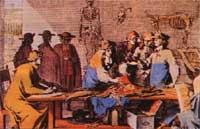
Therefore, and if we leave aside the writings of Leonardo da Vinci, in his day they did not get any influence and already in the XV. We must wait until the end of the 20th century for the anatomy to advance. At this time Manfredi made a comparison between several authorities and some observations made. But what really started anatomy and modern physiology was Jean Fresnel (1497-1558). This physician, philosopher and mathematician published in 1542 De abditis rerum causis.
Therefore, the Flemish Andreas Vesalius (1515-1564), outside Galeno, wrote the book on anatomy De humani corporis fabrica. Comments by Galeno and Mondino are not taken into account. It only contained what he could check by doing dissections. He made great progress, especially in areas of bones, veins, brains and abdominal organs. XVI. By the end of the 20th century the anatomy had broken the chains with the ancient authorities. He is the first to break this yoke between the biological sciences.
Physiology took longer to do the same, because Galen's doctrine was well connected. According to this, arterial blood and venous blood (with two different types of blood) formed two different currents driven by the heart. These brought to the body tissues natural and life spirits.
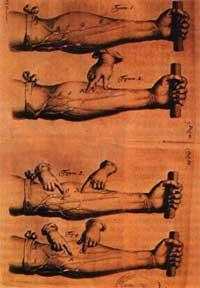
Tutelary physician Miguel Servet (1511-1533), condemned and burned for his heterodox opinions, discovered the circulation of blood in a pulmonary internment regime, but did not clarify how the heart maintains blood flow. For this we will have to wait for the arrival of William Harvey (1578-1657). After studying in England and abroad, especially in Padua, he returned to England to practice as a doctor.
There he began to serve the king and he offered him all the animals he needed for his investigations. Among other things, he studied the development of chickens within the egg and the beat of their hearts. In 1628 he published the book on the heart Exercitatio anatomica de motu cordis et sanguinis, a small book in which the results of the observations made over many years on living animals and humans were exposed, achieving a huge influence. Immediately the physiology of Galen began to descend.
Harvey found that by multiplying the amount of blood that drives the heart in each beat by the number of pulsations that occur in half an hour, the heart moves all the blood that the body has. Based on this, he concluded that blood, somehow, must move from arteries to veins to return to the heart. That is, blood constitutes a real cyclic movement, that is, a circulation.
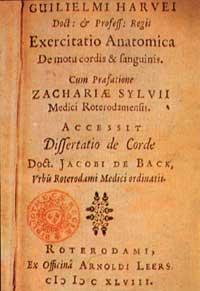
To understand the merit of this phenomenon that today seems so simple to us, we must take into account the beliefs in force at the time: spirits of life, natural spirits or animal spirits, accepted to express bodily functions. Harvey's work was a huge break in this spirit world. In his second work, De Generatione Animalium, the greatest advance in embryology was made since the Aristotelian era.
The complete complement and verification of Harvey's work was achieved when the compound microscope was invented and used in physiology work. This microscope was built by Janssen around 1590. The image that the first ones gave was very distorted, since they wanted to get a big increase. But by 1650, after correcting most errors, it became a valuable research tool.
In 1661, Malpighi, from Bologna, explored the lung structure through microscopy and ensured that the branches of the trachea end in small tubes that extend through the air (from whose surfaces there is an artery and a network of veins). This researcher studied other glands and organs under a microscope, obtaining deep explanations about their structure and function. Although Harvey showed that blood circulates through tissues, Malpighi discovered the structure of these tissues and the mechanism of that circulation.
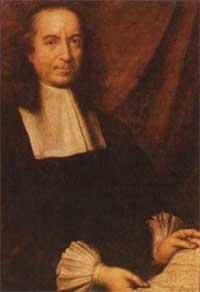
Research into blood circulation raises a respiratory problem by itself. Seeing that the lungs function like a bellows, they thought about the analogy with burning. In 1617 Fludd discovered that by burning some substances in a glass forest placed face down on a water surface, the air lost some of its volume and then the flame was extinguished. Based on this, Borelli later found that animals die in the vacuum. He also explained how breathing works from mechanics.
Both the physiology of the brain and the nervous system experienced very small advances at that time and in the 18th century. Until the twentieth century this sector was quite delayed.
Botany
The ability of plants to cure certain diseases has always been known. However, this type of knowledge had its particular cabin in monasteries during the Middle Ages. According to the belief that existed at that time, the forms of the leaves of the plants and the colors of the flowers indicated why God created them. For example, if the appearance of a leaf was blue, this plant was suitable to cure nephritis.
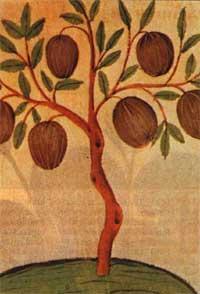
With the rising standard of living in the Renaissance, the gardens reproduce not only in monasteries, but also in rich palaces and houses. Accordingly, XVI. In the eighteenth century botany underwent a breakthrough.
The oblivion of ancient botanists, such as Alberto Magnus and Rufino, forced from scratch. The botanist Valerius Cordus (1515-1544) took care of the observations and collected in detail everything achieved. At that time several books of grass were published, mostly based on Dioskorides. In it the plants were described and their properties were shown for both the kitchen and the cure. In 1551 William Turner wrote a book on herbs and this author can be considered the first naturalist.
Buletina
Bidali zure helbide elektronikoa eta jaso asteroko buletina zure sarrera-ontzian











